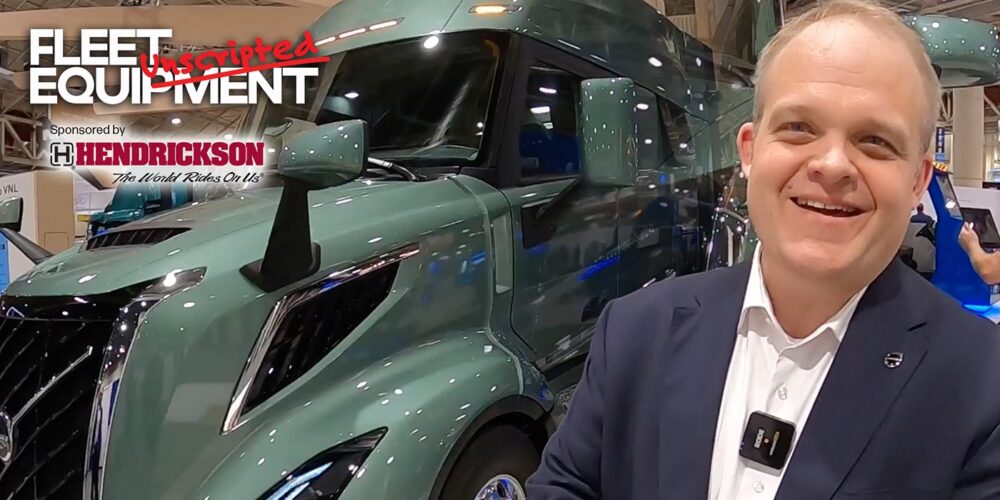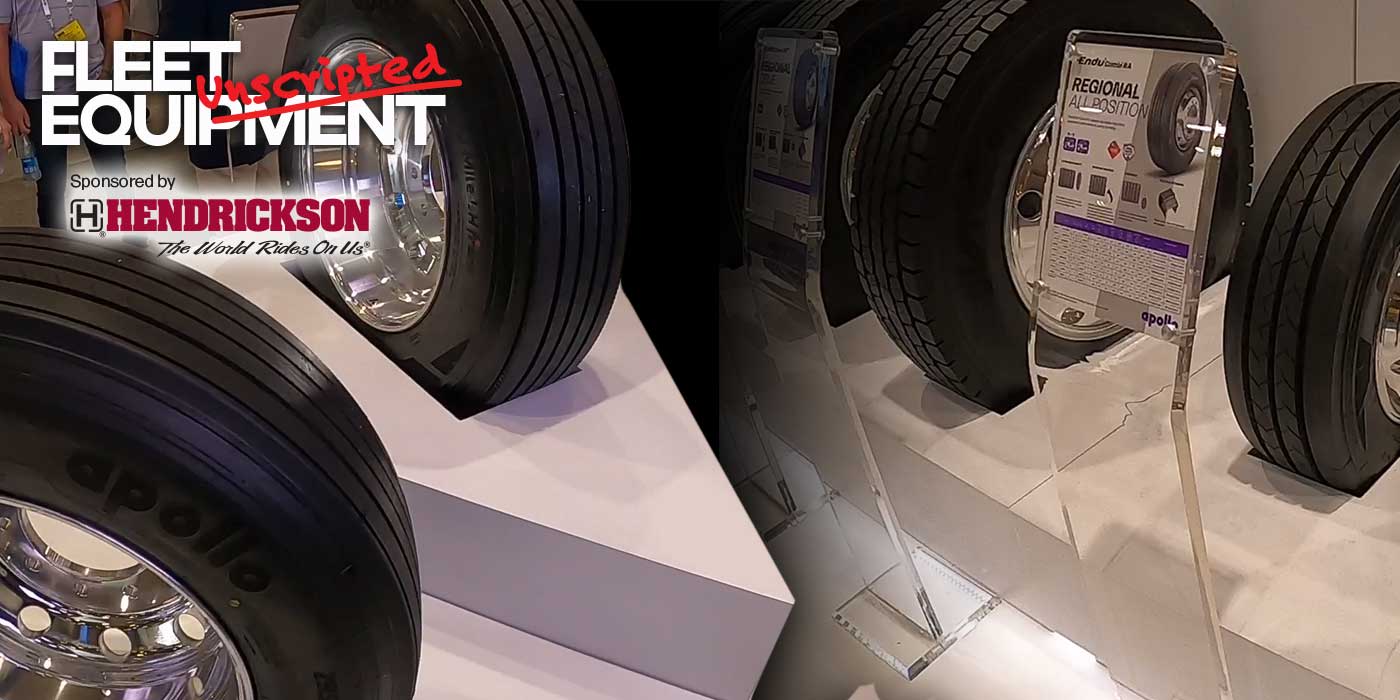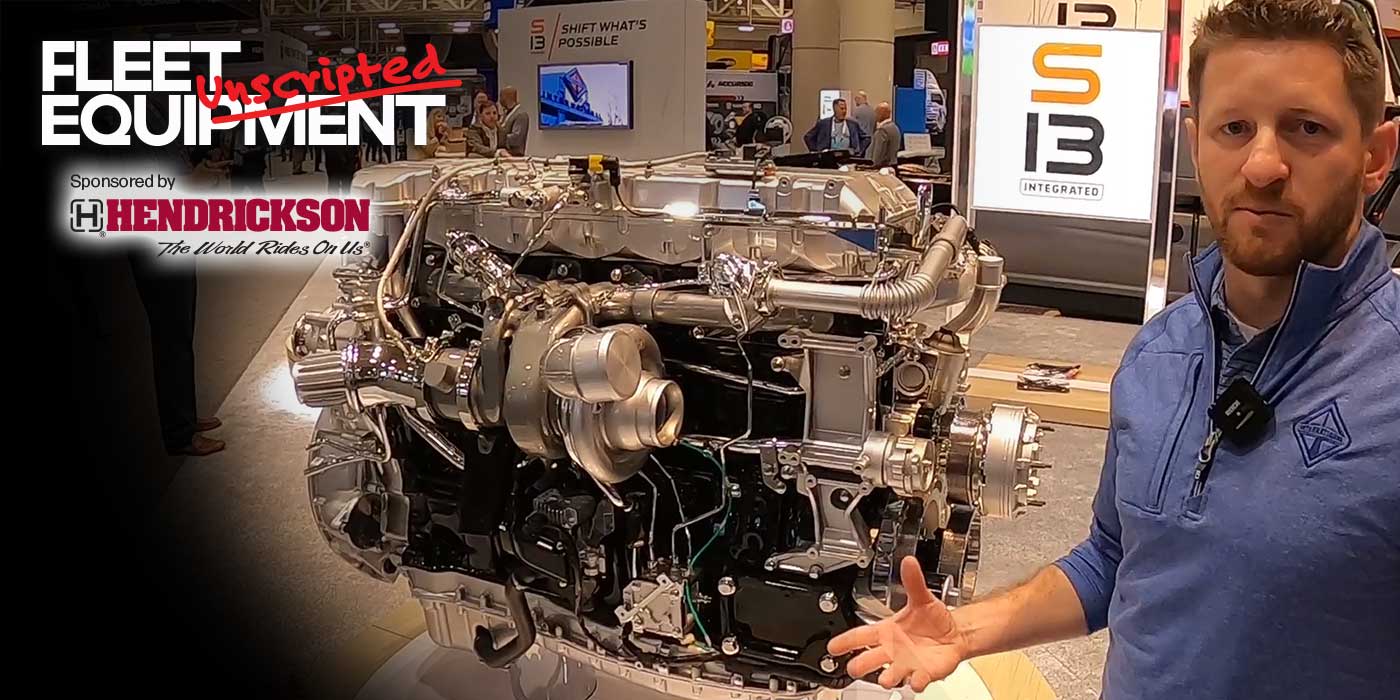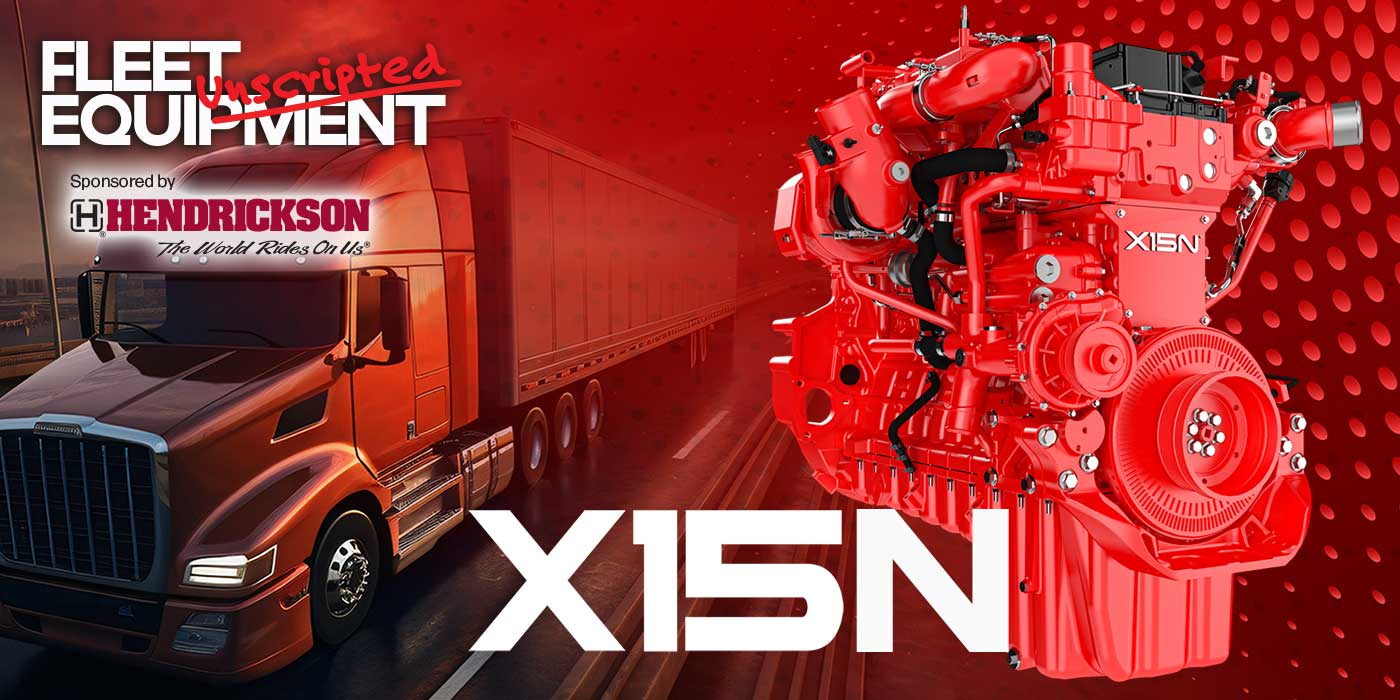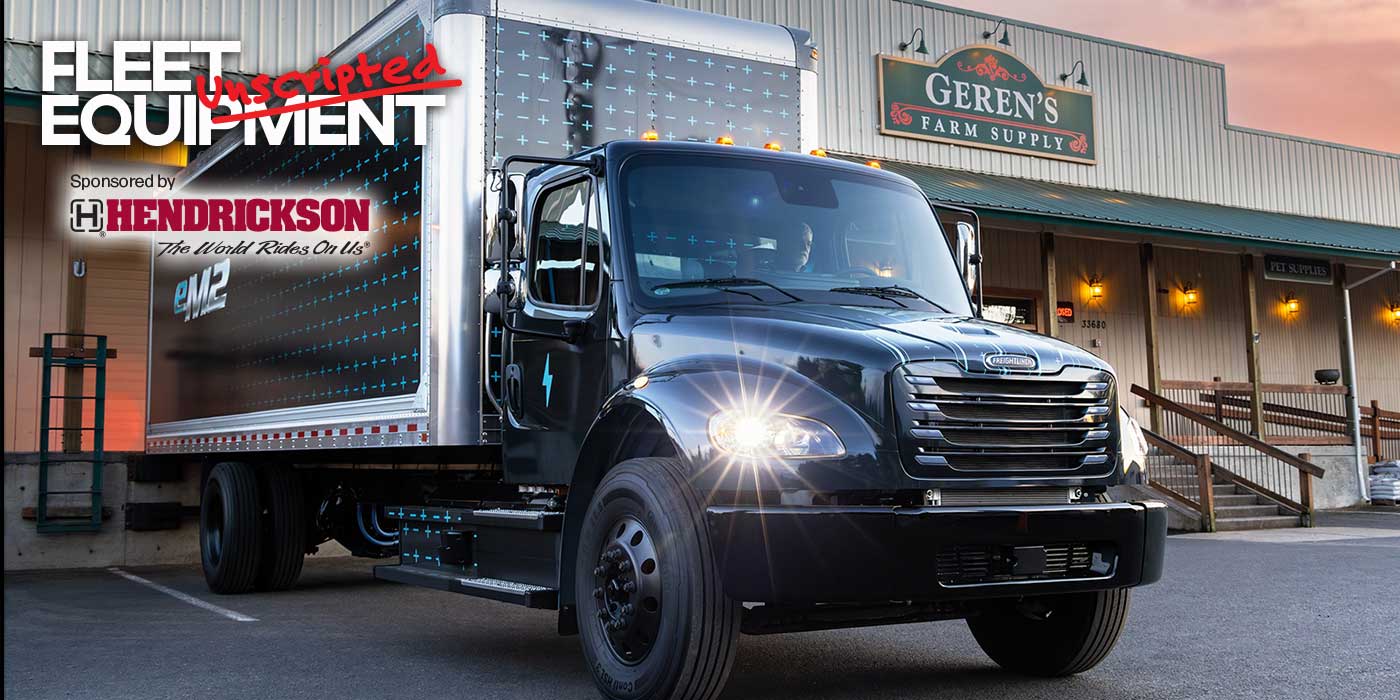Well before electric trucks started to roll into real world applications, there was talk of how the new powertrain technology could impact the truck ownership model. We’ve seen bundled offerings that pull in costs related to, but outside of the electric truck itself. Yet, Mack Trucks recently announced “Vehicle as a Service” wears the new era of truck ownership on its sleeve and offers a few new options in the electric vehicle bundle.
So what is a Vehicle as a Service? Is it a lease? Is it a purchase bundle?
It’s the first question I put to George Fotopoulos, head of eMoility business unit, Mack Trucks. He provides and overview of the program that’s available for the Mack LR Electric refuse truck, how it differs from equipment acquisition models you are used to and potentially mitigates some of the EV adoption risk. Watch the interview above for all of the info.

No script? No plan? No problem. Welcome to Fleet Equipment Unscripted—the video interview series that connects you with the greatest minds in the heavy-duty trucking world.
Bookmark the Fleet Equipment Unscripted page to catch all of our Unscripted episodes, and subscribe to our newsletter by clicking here to have the latest news and in-depth trucking stories delivered straight to your inbox.
Fleet Equipment Unscripted is sponsored by Hendrickson.
Here’s the transcript
Jason Morgan:
Hi everyone. I’m Jason Morgan, Content Director for Fleet Equipment, and welcome to Fleet Equipment Unscripted. Today we’re talking with George Fotopoulos, head of eMobility business unit at Mack Trucks. George, thank you for joining me.
George Fotopoulos:
Jason, great to be here today. Thank you for having me and grateful for opportunity for speaking with you today. Appreciate that.
Jason Morgan:
Yeah, for sure. I really wanted to catch up with you because you made a recent announcement regarding the Mack LR Electric Refuse truck and offering what’s called vehicle as a service. Which is one, just a really cool name by the way. And two, I think it kind of speaks toward, there have been questions of how electric vehicles and electric trucks, the business model and ownership model maybe for fleets might change or shift or evolve. So can you just lay some groundwork for us here? And what is vehicle as a service? Is this a lease? Is it different than a lease? Am I buying the truck? How does this work?
George Fotopoulos:
Sure. I’d be glad to, I want to make a point first that this vehicle as a service package is exclusive to our Mack LRE battery electric refuse vehicle. And it’s a vehicle that has been in here in serial production since last year, since 2021. And to be clear, this is a lease package, but it’s nothing like we’ve ever done before. And let me explain a little bit what that is and what’s included and I want to make sure I cover five items that is included. The first one it’s obviously includes is the vehicle and its batteries, of course, right. That’s the meat and potatoes of this business model, so that’s included obviously.
George Fotopoulos:
The second one is that it also includes the customer refuse body of choice, which, if you don’t know, can cost as much as the vehicle itself, right? And these are industry values that are manufactured by body upfitters, not by Mack Trucks. And yet we take on this asset in this lease package.
George Fotopoulos:
The third item I want to include here is that it includes our most comprehensive vehicle protection plan that we call our Mack Ultra Service Agreement. It provides all the preventative and corrective maintenance for the term of the lease. It also includes the uptime services that we have that are called Mack Guard Dog Connect. And we also have it includes our roadside assistance, includes battery monitoring, includes battery performance guarantees. It’s truly a worry free coverage for our vehicle.
George Fotopoulos:
Then off to the fourth item here, it also includes any kind of taxes or customer incentives that are applicable towards the customer.
George Fotopoulos:
And the fifth one I want to make sure is coverage is, it’s an important one because it’s an option here to bundling your charging hardware and even the customer’s charging infrastructure needs. And by infrastructure needs I mean here, the electrical utility upgrades that you may need on your depot in your facility. And it includes all the costs from design, engineering, construction, electrical hardware, and yes, even putting that copper in the ground if needed. So you can see it’s a full bundling of everything a customer needs to go EV in their refuse truck fleet.
Jason Morgan:
Yeah. And I mean that last component’s really interesting. I do want to back up for a moment and touch on the body building aspect, because I know you have upfitters you work with. So, as a customer, is it any upfitter? Is there a selection of upfitters that I can work with, with the vehicle as a service platform? How does that work?
George Fotopoulos:
Sure. Yeah. We do work with all of the upfitters that are out there. We assess the feasibility here of their product here on our Mack LRE. We have some pre configured options for a customer to go in there and select while they spec their vehicle. And if the body that they’re looking for is not pre-configured. We take that on as an engineering request to work with that body manufacturer, then of course assess the fit and make it available.
Jason Morgan:
Okay. And then the last part of the charging infrastructure and bundling that in with the lease price, you mentioned that’s an option, right? That’s just something I can tag on. Whereas the other four bullet points are kind of related to running the vehicle, this is something that I can kind of take or leave depending on my needs. If I need some help, I can add it in. And if not, did you say it was an option to add that in?
George Fotopoulos:
That is a correct understanding. That is an option to add in. Sometimes you don’t need the utility upgrades or sometimes you want to buy the charger on your own, you don’t need to finance it. So therefore yes, it is an option at the end.
Jason Morgan:
Okay. Well and honestly, from covering the market, it sounds like a really great option, because that is one of the most confusing, difficult components of this, is trying…
George Fotopoulos:
And expensive, right?
Jason Morgan:
I mean that’s where a lot of…
George Fotopoulos:
And expensive,
Jason Morgan:
Right. That’s where that heavy lifting comes in. Very cool. Okay. So then once everything’s in the ground, my [inaudible 00:04:22] up, I got the trucks I’m running them, does this include the charging cost then? Are you managing the charging cost when I’m charging the truck or is that still separate, I handle that with my utility?
George Fotopoulos:
Yeah, exactly. That’s a variable, right? How much you’re operating the vehicle, how many kilowatts you’re using, that’s in your electric bill. So that’s not in the vehicle as a service model, it’s a separate line item for operating expenses.
Jason Morgan:
Okay. Very cool. Okay. Very good. So now that I have a good understanding of this, what does this mean for the vehicle life cycle? How do you see this changing the EV life cycle and what are my options a year or two or three down the road?
George Fotopoulos:
Yeah. I want to say that Jason first, the vehicle is not spent after a year or two, of course, in service. This thing is built like a Mack truck because it is a Mack truck, right? So it lasts a lot longer than that. But this business model can impact the fleet’s EV life cycle drastically actually. And, why? It’s because they have many options that they did not have before to consider. And they are quite a few options. The first option here is to renew the vehicle as a service lease, at a reduced rate, after the initial term.
Jason Morgan:
Oh, Okay.
George Fotopoulos:
The second option is actually to buy the vehicle, if you want to spend the capital at this point in time. The third option is here to consider a other re marketed vehicles that have different configurations perhaps to put into your fleet. The fourth option is to upgrade to new vehicles, to the latest and greatest generation technology. And the last option is to simply walk away after the lease term. So those options were not available to the fleets before. Before they built a very unique refuse vehicle, they used it for 10, 15 years and then they recycled that vehicle. Right. So therefore, that was the model before. So it’s quite different today.
Jason Morgan:
Well, and you draw an interesting point here about the Mack quality. The Mack, the bones of it, right, are going to last like seemingly an eternity compared to battery technology and how quick it moves, right? So there’s lots to talk about how batteries are going to evolve over the next two, three, five years. So even though the truck, it might still be great, might still be running good, but if I’m getting longer time between charging cycles, because batteries have evolved to the point where now I’m just getting a little bit more range and the cycle capacity is good. Also a good option to be like, hey, to your point, let’s upgrade to the new generation of truck and I’m not beholden to the battery technology of today when I might need something a little different tomorrow.
George Fotopoulos:
Yeah.
Jason Morgan:
So very, a very [crosstalk 00:06:48]
George Fotopoulos:
Perfect understanding. Yeah.
Jason Morgan:
Speaking of batteries, I do want to go back too, because you mentioned the service component. I think this is really important to an EVs because I think a lot of unknown. We have a lot of… And you’ve been running a good test case in New York there with the LR Electric. And so you have a probably pretty good understanding of some maintenance cases, but we do want to see how EVs perform over time. And so bundling the service that comes with the EV and that support, that’s one, a piece of mind for of the fleets and two, just a good… you have that support. But you mentioned battery monitoring and other components there. Are there any lessons that you’ve seen in New York or what kind of guidance are you hoping to offer customers in being able to bundle that service in and then support them after the sale? How important is that in this whole application component?
George Fotopoulos:
Sure. It’s all about that. The data collection, right. And doing preventative maintenance. So the statement is there that the data is the new gold. So we have an abundance of course of sensors here on the vehicle and it’s collecting very relevant data, which is helping us understand the many on the job variables that this vehicle is going through. And towards the customer a critical fault code can be detected with our Mack Guard Dog Connectivity platform here. In a context here, our uptime center in Greensboro, North Carolina, and these agents then of course get with Mack customers and they coordinate the repairs and services with the local Mack dealer.
Jason Morgan:
Right. Well, and it’s good to have that guy because these are new vehicles, so especially on the service side. On the service side, is that something that they will deal with the dealership? Do you have to do any training on the fleet end or the refuse side end of what you might not want to do or might not want to interact with the truck, because this is an EV versus what they’re used to on the diesel with the high voltage systems? Do you do any training and go in there and talk to them about the safety stuff?
George Fotopoulos:
Yeah. The training side of it is for the servicing the vehicle, preventative, and of course any kind of the repair kind of services are at our dealerships. These are the technicians that are highly trained to treat this vehicle. When it comes to the training that we provide towards the customer, it’s more the safety side of the equation. So we do the safety training with our customers, but not the repair and maintenance or the preventive maintenance of it. We have all this being done by a certified technician at our dealers.
Jason Morgan:
Right. Very cool. I want to go back to one quick point, because we brought it up, just the New York operation. I know that was the pilot test case for the LR Electric. And we’ve covered that as it’s rolled out, but what are some of the things you’ve learned from that operation? What did that refuse operation see and what were their impressions of running the LR Electric?
George Fotopoulos:
Sure. That was an operation, of course, that was in a city, New York city itself. So it’s not a suburban application, but a very urban, dense urban area. So this vehicle that was running was with what we call a rear load application. And that duty cycle was very much fulfilled with the vehicle itself. So we were testing to make sure that duty cycle and that environment with this vehicle and it was capable and that match happened. So DSNY, they’re a great customer and a great partner here helping us develop our Mack LRE. And they’ve been overwhelmingly positively about the vehicle itself. So much so to the fact that they ordered seven more trucks here to go into the job in the city of New York by this year.
Jason Morgan:
Oh, wow. Okay. Well that kind of also… One of the things that I’ve been talking a lot about too, going back to that, again, that really cool option, the bundle in all your charging infrastructure is, the chances are, you’re probably not just buying one truck, one electric truck when it comes to it. You got to come with that scalability in mind and that growth in mind of like, you might try one, you might pilot one, you might get two, but at the end of the day, you are looking at maybe upwards of a dozen. And you’re looking at, to your point, life cycles of potentially, talking with some fleets, at least, even on the heavy duty regional side, looking at life cycles of six, eight, even ten years.
George Fotopoulos:
Sure.
Jason Morgan:
Which crazy in the regional side, I know that’s kind of a drop in the bucket for the refuse side. But, having the flexibility of the vehicle as a service package to just kind of, maybe even reasses my needs two years after running the electric trucks and scaling up, do you see that impacting those decisions? Is that something that the customers are talking about, or even just possibilities of rolling this out into other segments down the line?
George Fotopoulos:
Sure. Obviously this is the reason why we release such a program here. There are incentives to [inaudible 00:11:18] in the market that are helping customers that advance their heavy duty truck fleet towards EVs. And our vehicle as a service business model is our customer, let’s call it incentive program that is lowering those batteries of adoption by answering to those possible hesitations. So obviously we’re getting those hesitations from the customers and this is our answer to that. Taking the, how do I service this vehicle out of the equation, taking a-
Jason Morgan:
Right.
George Fotopoulos:
… How long does my battery last out of the equation? You know what I mean?
Jason Morgan:
Right.
George Fotopoulos:
This package answers to those hesitations that could be out there.
Jason Morgan:
Right. Very cool. Well, George, I appreciate you taking the time to clarify this and go over this. I think it’s super cool. I’m sure I will be bugging you again very soon for even more EV details.
George Fotopoulos:
Yeah. Thank you. Anytime, Jason, and look for that cleaner, that quieter, that less pungent and copper bulldog Mack trucks in your neighborhood, because I’m excited to see it in mine as well.
Jason Morgan:
Yeah, that’s right. Well, and it’s a good point. You got to really look for it because you’re not going to hear it at this point. I mean, you’ll hear the refuse collection, but man, they are nice and quiet and the super cool. So I’m excited to see them too.
George Fotopoulos:
Excellent.
Jason Morgan:
Thanks again.
George Fotopoulos:
Thank you very much. Take care.





